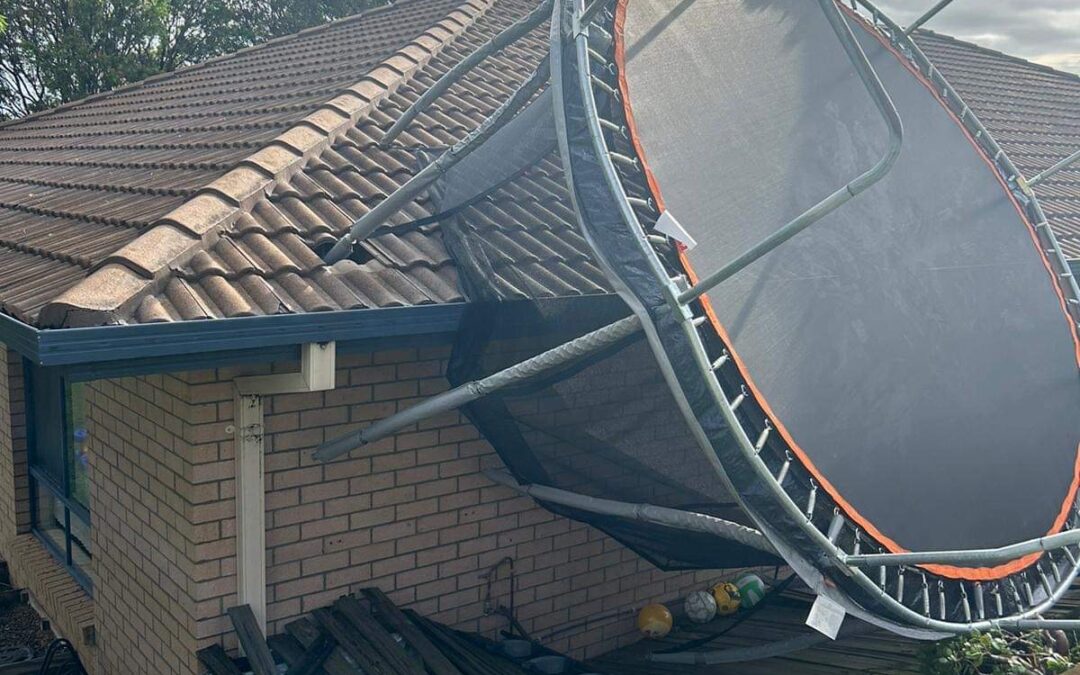Climate volatility means major storms are no longer confined to summer months but can occur anytime.
The summer of 2023-24 experienced high insurance claim numbers for wild weather as record heatwaves, intense storms and slow-moving cyclones impacted on communities across the nation.
Data collated by IAG-owned NRMA Insurance for weather damage to homes and vehicles found it was the worst season for home damage since autumn 2022.
Pre-planning for storms is good risk management to reduce loss when a storm hits.
NRMA provides three tips for wild weather preparedness for autumn:
- Protect your home or business premises by clearing debris, cleaning gutters, shutting windows and securing items that have the potential to become airborne.
- Protect your car by keeping it under cover and avoiding outdoor carparks when wild weather is predicted.
- Conduct a roof assessment to ensure there are no cracks, leaks or porous tiles that could be damaged and allow water into your home or business premises.
Home and business owners are advised to have emergency plans in place that can be activated when the Bureau of Meteorology issues a severe storm warning. Zurich Insurance suggests the plan include:
- Knowing how to tune into severe weather warning services and radio broadcasts
- Preparing (and rehearsing) evacuation procedures
- Pre-packing an emergency kit that includes important contact numbers (including your insurance broker), a portable radio, torches, spare batteries, a first aid kit and plastic bags (for clothing and valuables)
- Having emergency equipment on standby (like tarpaulins, rope, hammer and nails, and sandbags) to protect your premises, plant, stock and other building contents if a storm damages the roof or walls
- Isolating water, gas and electricity supplies when severe storms are forecast to prevent damage and personal injury from ruptured pipes or fallen power lines.
Pre-planning for storms could include a qualified builder’s roof inspection to assess:
- Whether there are any potential leaks
- Drainage systems, including downpipes and gutters, to ensure they’re adequate for sudden downpours and hailstorms
- How well the roof, windows and doors are secured to the building’s wall structure
- The building’s ability to withstand wind forces characteristic of the location
- Compliance with wind load requirements in the Building Code of Australia.
When a storm threatens, check around your property for loose items that can become missiles and cause major damage in high winds. Outdoor furniture, lightweight sheds, children’s play equipment, including trampolines and slippery slides, rubbish bins, and outdoor signage can create havoc in high winds.
Do nearby trees have dead branches that could fall on your property in a storm?
Is your property in an exposed location for lightning strikes? Is it the highest building in the area? Consider installing a lightning protection system, which should be checked regularly, including its earthing system.
JMD Ross Insurance Brokers can help you mitigate against risks by providing insurance solutions.
To discuss your risk management and insurance requirements, please contact:
- John Davaine M: 0413 610 523 E: jdavaine@jmdross.com.au
- John G Duncan M: 0418 976 772 E: jgduncan@jmdross.com.au
- Bhavesh Radiya M: 0414 247 055 E: bradiya@jmdross.com.au


